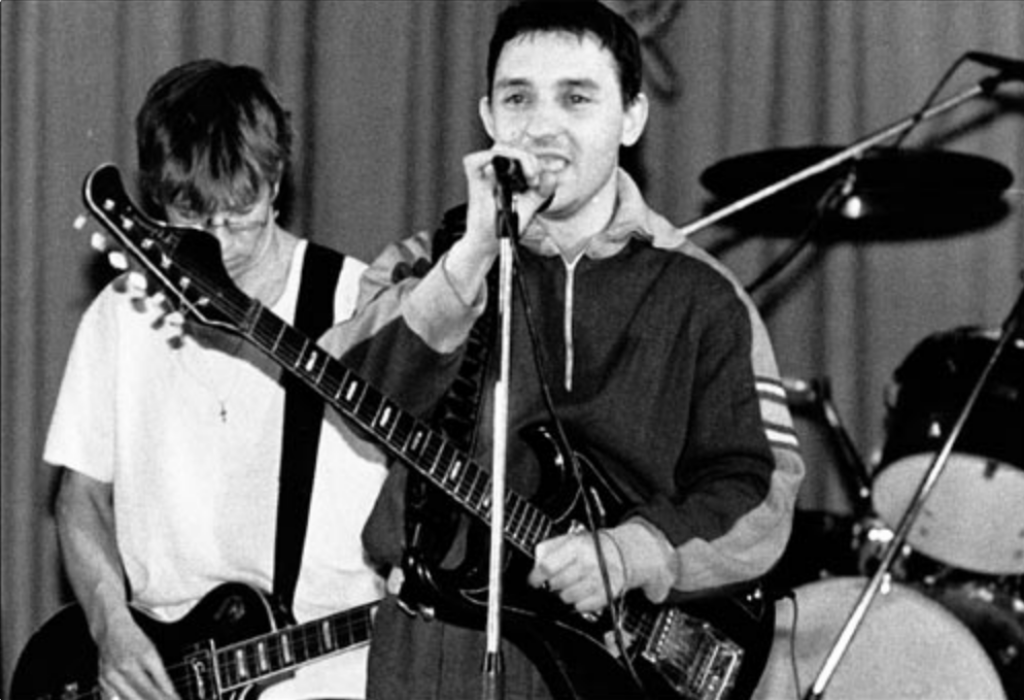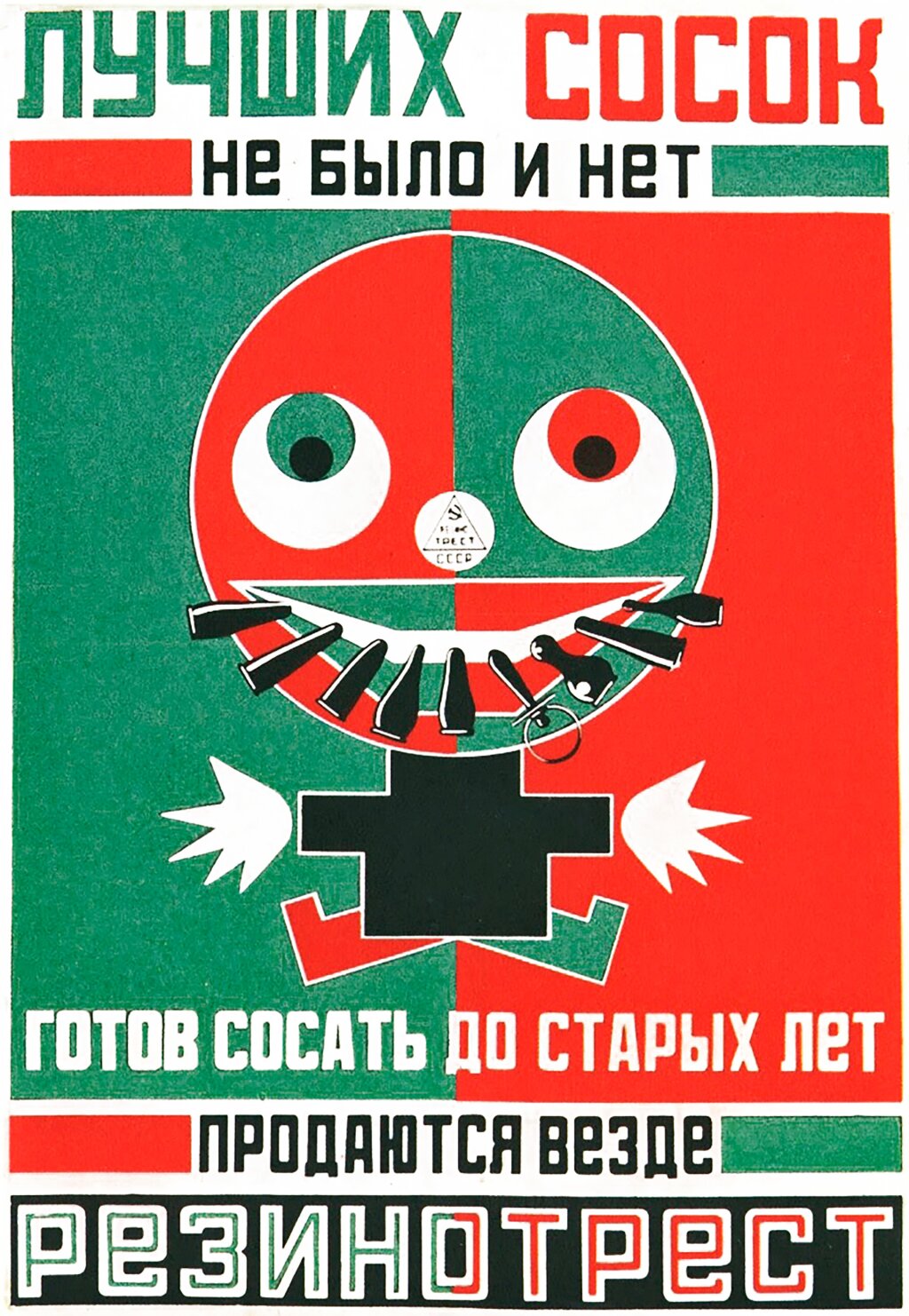The Jordan Center stands with all the people of Ukraine, Russia, and the rest of the world who oppose the Russian invasion of Ukraine. See our statement here.
This post features the Cultural Studies Grand Prize winner in the Jordan Center Blog's third annual Graduate Student Essay Competition.
Jacob Richey is a PhD student in Slavic Languages and Literatures at the University of Pittsburgh. His research interests include late and post-Soviet culture, twentieth-century Russian literature, and the history of socialist states.
Above: Roman Neumoev performs with Instructions for Survival in 1986. Source
Although Roman Neumoev, the frontman for rock group Instructions for Survival (Instruktsiia po vyzhivaniiu), has openly professed his Christian faith for years, it would be wrong or at least confusing to categorize his music as “Christian Rock.” In American parlance, the term connotes a specific kind of anthemic, Jesus-centric alternative music meant for a Protestant worship service. Neumoev’s music could not be more different. Instructions for Survival’s discography consists of noisy, abrasive post-punk with harsh existential overtones, traditionally played for audiences not of church groups, but communists, fascists, and punks.
Despite the fact that Neumoev converted to Orthodox Christianity in 1991, he spent the 1990s opposing the pro-church Russian state, joining anti-Yeltsin National Communist movements like Egor Letov’s Russian Breakthrough (Russkii proryv) and backing Communist Gennady Zyuganov in the 1996 Russian Presidential Election. Neumoev’s fervent opposition to the newly church-friendly Russian state raises a simple question: where do his Christian beliefs fit in? To address this question, I will close-read the song “Homeland Death (Rodina – Smert’)” and explore how Neumoev’s conception of death relates to his faith, functions as common ground with misanthropes like Letov, and expresses an existential malaise common to both the late and post-Soviet periods.
Directly or indirectly, most Instructions for Survival songs maintain that life is unavoidably senseless and cruel, and “Homeland Death” is no exception. The song opens by describing the concept of survival as a fundamentally destructive process:
Who is faster – he is right
Who is blacker – he is alive
Who remained – he is holy
Is this really how it needs to be, will we live this way?
(Kto bystree — tot i prav,
Kto chernee — tot i zhiv,
Kto ostalsia — tot i sviat
Neuzheli tak i nado, tak i budem zhit’?)
Morally positive terms like “holy,” “right,” and “living” are compared with neutral and even negative phrases; survivors are blacker, speed equals right, to remain is holy. Consequently, as the following lines assert, we will live “Uselessly, like loving without hurting / Hopelessly, like trying not to do evil” (Bespolezno, kak liubitʹ i ne delatʹ bolʹ, Beznadezhno, kak pytatʹsja ne delatʹ zla). Life may ostensibly be a good thing, but it necessarily produces evil, and vice versa. Suffering and life mutually produce and reinforce one another. In this context, the question “Is this really how it needs to be, will we live this way?” highlights the speaker’s disbelief at such a broken and confused system perpetuating itself; if life is really such a destructive force, how does it not destroy itself? The answer to this question evidently lies with death, for in the second verse the speaker sings:
What is not near death is a lie
Who knows not, he will live
Who finds out, a knife in the back
Is this really how it needs to be, how we will live?
(Chto ne do smerti — to lozhʹ,
Kto ne znaet — budet zhiv,
Kto uznaet — v spinu nozh,
Neuzheli tak i nado, tak i budem zhitʹ?)
Here the speaker links death with knowledge and insinuates that any life separate from death is a lie. He again repeats his disbelief: “Is this really how it needs to be, will we live this way?” To live in a world where knowledge and meaning are found only in death seems impossible, even unthinkable, but all the same life continues.
In the chorus, the speaker names death as his homeland, thereby establishing it as the centrally important force in the world. He sings:
Death is a lot of space for those who are dead
Death is a lot of space for those who are alive
It’s the meeting place of those who walked barefoot through the diamond rye
It’s the Homeland, Death
The Homeland is Death
(Smertʹ — mnogo mesta dlia tekh, kto miortv,
Smertʹ — mnogo mesta dlia teh, kto zhiv.
Èto mesto vstrechi teh, kto brodil bosikom po almaznoj rzhi.
Èto Rodina — Smertʹ.
Rodina — Smertʹ)
In contrast to a negative conception of death as the end or the loss of life, the speaker treats death as if it is something real. To call death a homeland (rodina) implies that people are born and raised there. Death, in the speaker’s formulation, isn’t merely an end, but a beginning; it is a positive and even productive force. Moreover, death does not simply exist beyond or outside of life but is “the meeting place of those who walked barefoot through the diamond rye.” Death, in the form of earthly suffering, rules over every human being, alive or not. It is the supreme organizing principle in the song’s ontological landscape. Moreover, by calling it a homeland, Neumoev gives death political and social status. Suffering under death’s power is not private but a shared sociocultural experience. “Homeland Death”’s framing of suffering as a social phenomenon speaks to a broader sense of loss and helplessness in late Soviet society as it reckoned with growing economic instability and the fallout from the Soviet-Afghan war (a topic about which Neumoev wrote numerous songs).
Although “Homeland Death'' was written in the 1980s as a reflection on Soviet society, it only became popular in the post-Soviet era. This development was due in large part to Siberian rock legend Egor Letov, who released the first studio recording of the song in 1990 and frequently covered it live in the decade that followed. Letov closely collaborated with Neumoev for a number of years, but possessed a distinct artistic philosophy that asserted death and self-destruction as forms of transcendence. Letov’s views were heavily invested in the concept of self-annihilation, and he saw rock music as a sort of anti-humanist shamanism. “If humanistic art asserts life, the prolongation of the species, etc.” Letov once said, “then rock asserts self-destruction as a kind of path to God, a higher consciousness.” In short, for Letov, rock does not uncover divine logos or human knowledge, but transcends humanity altogether. In turn, the destruction of human knowledge gives way to a higher form of consciousness.
“Homeland Death” departs from Letov’s views by asserting that, while death may be higher knowledge, it does not separate but unites the living and the dead. In this sense, the song denies death’s power as a transcendent or transformative force. Death cannot deliver us from the human condition because it is the human condition; the highest knowledge is simply knowledge of unending suffering. Whereas Letov sees death as the solution to a problem, Neumoev treats death as the central unsolvable problem.
The gap between Letov’s and Neumoev’s understanding of death is not as wide as it might seem. In essence, “Homeland Death” presents a Christian understanding of a world without Christ; without the Resurrection, death reigns supreme as the ultimate creative and destructive principle. Likewise, Letov’s misanthropic rock-shamanism venerates death as the singular escape from a world of ego and suffering. Both men approach reality from an essentially Christian perspective, where any notion of transcendence or salvation depends entirely on the nature of death. At the same time, neither is willing to unreservedly accept the possibility of resurrection or salvation, with Neumoev expressing severe doubt and Letov outright denying the possibility of any triumph over death. They find themselves caught in a gruesome, contradictory reality which they are unable to accept or reject entirely. Although itself a product of the socialist era, “Homeland Death”’s popularity in the 1990s suggests that for many, the fall of the Soviet Union did not resolve, but only exacerbated the question: “Is this really how it needs to be, will we live this way?”



